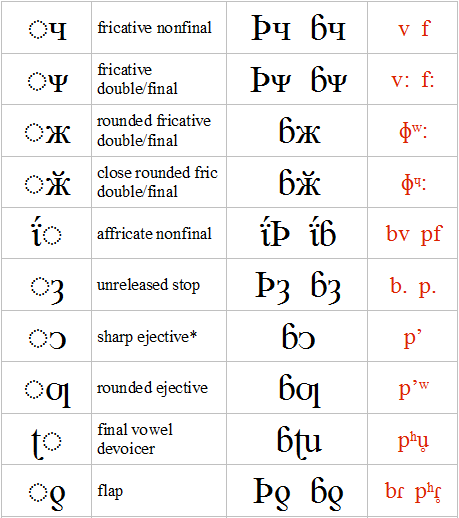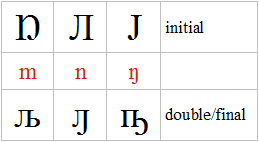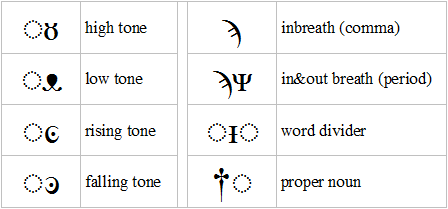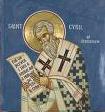This is an alternative alphabet system for the SIGIL language, using 52 glyphs from various Unicode blocks within the Times New Roman font. Included are rare or interesting glyphs from Latin, Greek, Coptic and Cyrillic blocks. It was an experiment in assigning new values to pre-existing glyphs, inspired by the script for Cherokee. And some ideas relating to the phonology of SIGIL are expressed in new ways.
Consonants
Unlike the original cursive script, Cygil has a separate base for voiced and unvoiced consonants, and distinct glyphs for the nasals. A plosive is printed as an unmodified base, while fricatives, stops and ejectives take a second modifier (see below).
Vowels
Vowels are given separate alphabetic glyphs, visually suggestive of rounding and nonrounding (sharpness).
The vowel regions of SIGIL:
Modifiers
Many consonantal phonemes are printed as digraphs. Some combinations of base+modifier do not form valid phonemes, so as in Maui and Sigil Panel these may be used for non-phonemic purposes. Note that the affricate modifier is prefixed to its base, since in some cases (S, SS, L) the plosive partner is not the same as the base used for the fricative. The flap glyph is similar to the bottom half of the unvoiced R glyph (although in practice, it can be voiced if following a voiced plosive).

*the voiced version of a plain ejective might represent an implosive.
Other symbols
Example
Here is a transliteration of the Universal Declaration of Human Rights Article 1:

“All human beings are born free and
equal in dignity and rights.
They are endowed with reason and conscience
and should act towards one another in a
spirit of brotherhood.”






